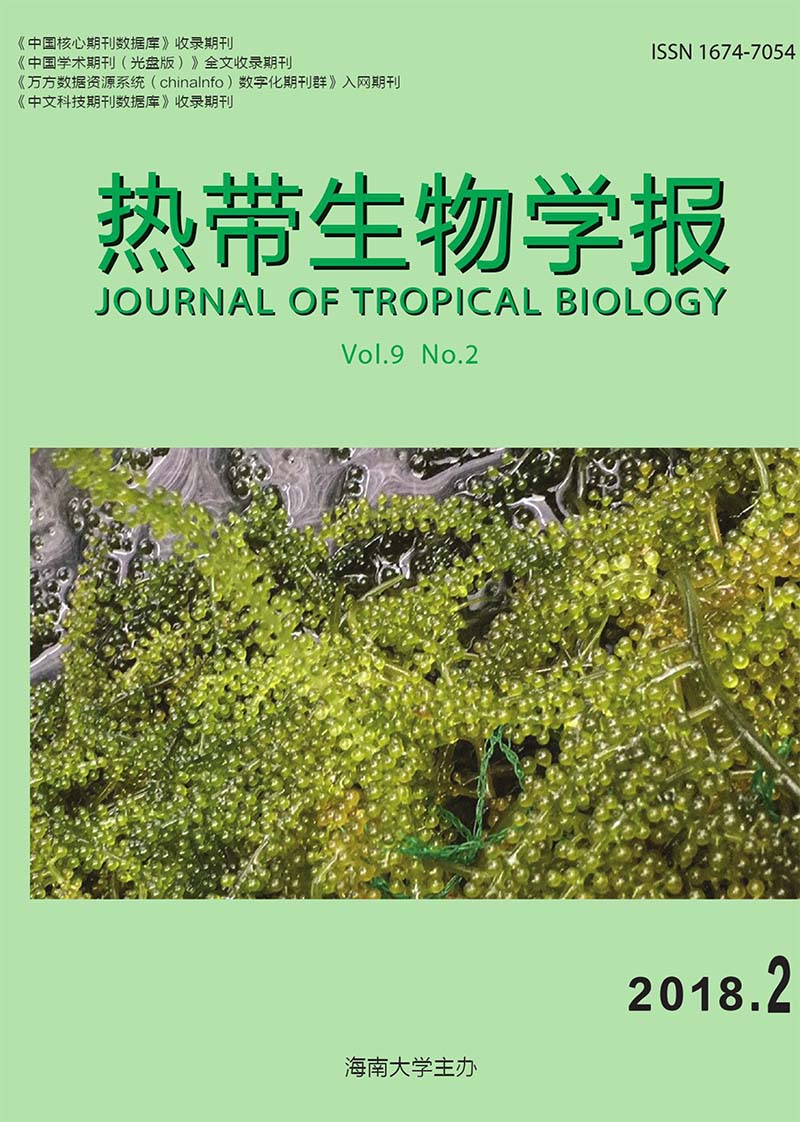Effects of water stress on pungency of hot pepper(Capsicum chinense Jacquin) and related physiological and biochemical indexes
doi: 10.15886/j.cnki.rdswxb.2018.02.013
- Received Date: 2017-07-10
- Rev Recd Date: 2018-01-23
-
Key words:
- Capsicum chinense Jacquin /
- water stress /
- capsaicin /
- physiological characteristics
Abstract: A cultivar of hot pepper(Capsicum chinense Jacquin), native to Hainan, was pot cultured and treated with different levels of water stress to study the relationship between stress induction and pungent taste of hot pepper for exploration of the mechanism of pungency regulation in the hot pepper. The contents of capsaicin and capsaicinoid, and the physiological and biochemical indexes and growth of the hot pepper under water stress were determined and the relationship between the pungency and related physiological and biochemical indexes of the hot pepper under water stress were analyzed. The results showed that the hot pepper under water stress increased their contents of capsaicin and capsaicinoid by 45.57% and 47.69%,respectively,as compared with the control. The hot pepper under water stress increased its pungent flavor, but tended to reduce its leaf area, chlorophyll content, water potential and relative water content. The proline content in the hot pepper under water stress continued to increase, consistent with the trend of capsaicinoids content; and the changes in plant height and stem diameter and pungent flavor wer not significant, while the increment in fruit size(i.e. fruit length and fruit width) was reduced significantly and negatively correlated with the content of capsaicinoids, which was confirmed by related studies. The hot pepper under water stress decreased and then increased specific leaf area, relative conductivity, content of malondialdehyde(MDA) as well as the activities of superoxide dismutase(SOD), catalase(CAT) and peroxidase(POD) in the antioxidant protective enzyme system, which was consistent with the changes of thecapsaicinoids accumulation rate.Chlorophyll, relative conductivity and malondialdehyde content are the responses of the hot pepper plants to drought tolerance. When the water stress was low, the anti-oxidant enzyme activity in the hot pepper was lower,and the capsaicin accumulation rate was lower as well. With the increase of water stress, the antioxidant enzyme activity in the hot pepper began to increase and the accumulation of capsaicinoids accelerated.However, when the water stress increased to a certain extent, the activity of antioxidant enzymes continued to rise in the hot pepper, while the rate of accumulation of capsaicinoids began to decrease. Therefore, a certain degree of water stress can increase the content of capsaicinoids, but severe water stress will reduce the accumulation of capsaicinoids.
| Citation: | WANG Longfei, CHENG Shanhan, XIA Feng, NI Miao, ZHANG Hao, WANG Ping, WANG Zhiwei, ZHU Guopeng, LIN Shisen. Effects of water stress on pungency of hot pepper(Capsicum chinense Jacquin) and related physiological and biochemical indexes[J]. Journal of Tropical Biology, 2018, 9(2): 207-213. doi: 10.15886/j.cnki.rdswxb.2018.02.013 |






 DownLoad:
DownLoad: